![]()
![]()
![]()
Use LEFT and RIGHT arrow keys to navigate between flashcards;
Use UP and DOWN arrow keys to flip the card;
H to show hint;
A reads text to speech;
10 Cards in this Set
- Front
- Back
|
Source (sender) |
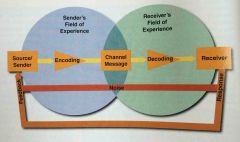
Person or organization that has information to share with another person or group of people |
|
|
Encoding |
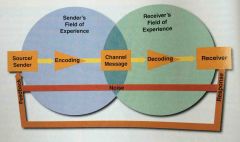
Source selects words, symbols, pictures, and the like to represent the message that will be delivered to the receiver- involves putting thoughts, ideas, or information into symbolic form |
|
|
Message |
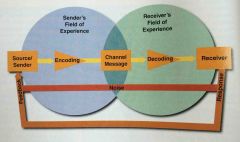
(Encoding process leads to development of a message that...) contains the information or meaning that the source hopes to convey; Content, structure, and design must be taken into account |
|
|
Channel |
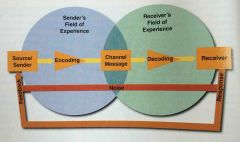
Method by which the communication travels from the source or sender to the receiver. *Nonpersonal channels: carry a message without direct interpersonal contact between sender and receiver Ie: mass media *Personal channels: direct communication between two or more persons either face-to-face or through email and social media - Includes "WOM" and buzz/viral marketing |
|
|
Decoding |
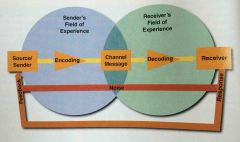
Process of transforming the sender's message back into thought, which is heavily influenced by a receiver's field of experience, or the perceptions, experiences, attitudes, and values he or she brings to the communication situation. |
|
|
Noise |

Extraneous factors that can distort or interfere with its reception; unplanned distortion or interference |
|
|
Response |
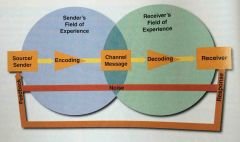
Receivers set of reactions after seeing, hearing, or reading the message |
|
|
Feedback |
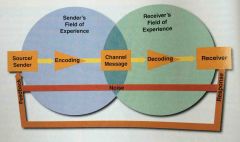
The part of the receiver's response that is communicated back to the sender |
|
|
AIDA model |
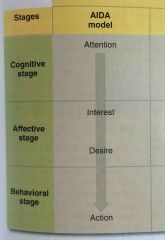
Attention, Interest, Desire, Action: Developed to represent the stages a salesperson must take a customer through in the personal-selling process |
|
|
Low-involvement Hierarchy |
"Cognition > Behavior > Attitude" OR "Learn > Do > Feel" sequence: When involvement in the purchase decision is low, there are minimal differences among brand alternatives and mass media advertising is *ESPECIALLY* important. Example: low-income families more likely to buy name brand because they have less money to experiment and need to buy quality the first time
|

